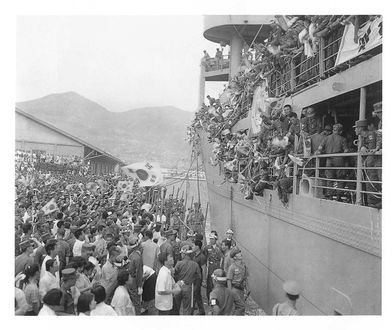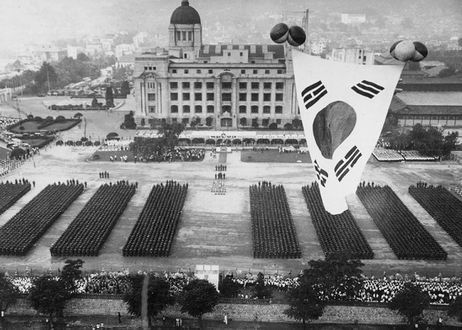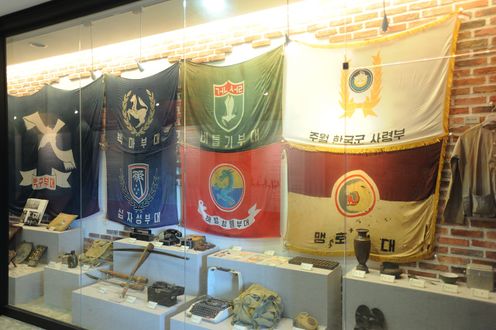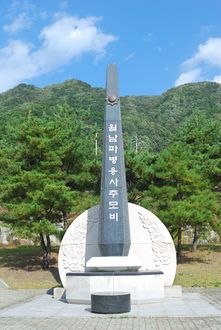The Vietnam War and Dispatched Troops
South Korea sent the second-largest number of troops to the Vietnam War behind only the United States. From September 1964 to March 1973, around 320 thousand South Korean soldiers were deployed to Vietnam after the approval of the Korean National Assembly.
Like Korea, Vietnam was divided into North and South due to the Cold War. South Koreans, who had fought their own civil war triggered by the Communist North and drove back their enemies in alliance with foreign troops from 16 countries, felt a sense of solidarity for Vietnamese when their war intensified in 1964.
President Park Chung-hee, who perceived the Vietnamese front as an extension of the Korean front, believed that supporting South Vietnam would be a strategic way to strengthen the ROK-US Mutual Defense Agreement and to prevent reduction of the U.S. troops in Korea. By 1965, the U.S. had mobilized its reserve army at home and also relocated some of its overseas troops to Vietnam; the two divisions stationed in Korea could also be dispatched to Vietnam at any time.
Upon the first official request of the United States and South Vietnam for reinforcement, the South Korean government dispatched 130 mobile army surgical hospital doctors and 10 Taekwondo instructors. Soon, an additional request followed. This time, the Korean government dispatched around 2,000 non-combat soldiers for rear support and construction work.
In 1965, the war in Vietnam further intensified. As a result, the United States and South Vietnam requested South Korea to deploy a division of combat troops. However, the idea of sending combat troops to the war met with a strong backlash from the oppositional parties and intellectuals. Having prioritized national security, President Park decided to send the 2nd Marine Brigade and Capital Division upon the National Assembly’s approval.
Once they arrived in Vietnam, the Korean troops fought effectively in the battles against Communist North. The U.S. government was facing a shortage of soldiers, and decided that Koreans were the most suited to the operations in Vietnam and requested additional men. In response, the Korean government deployed the 26th Regiment of the Capital Division and the 9th Division to Vietnam.
After Richard Nixon took office as the new president of the United States in 1969, he announced a gradual withdrawal plan of the U.S. troops from Vietnam under the so-called "Vietnamization of the War." It was in line with the Nixon Doctrine that called for Asian nations to be "responsible for their own national defense." At the time, 47,860 Korean soldiers were stationed in Vietnam. Around ten-thousand Korean soldiers left Vietnam at the first stage of withdrawal in 1972. However, some 37,000 combat soldiers from two infantry divisions remained there until the armistice in early 1973. Since late 1972, the Korean troops had outnumbered the U.S. ground forces.
For nine years since entering the war, around 5,099 Korean soldiers were killed and 11,232 were injured. A large number of Korean veterans who survived the war are still suffering from the severe aftereffects of defoliant used as a chemical weapon during the war.
The Vietnam War also brought unforeseen positive economic effects. Foreign currency sent home by the troops increased South Korea’s foreign currency reserves which were suffering a deficit. Furthermore, the survival tactics acquired during the war made Koreans stronger to overcome hardships working overseas in places like the Middle East. When the Vietnamese President Tran Duc Luong visited Korea in August 2001, President Kim Dae-jung formally "expressed condolence to the people of Vietnam for unintentionally inflicting pain by participating in that unhappy war."
Related Articles
- The Name of Honor and Prosperity - The Republic of Korea (South Korea)
- The Korean Construction Industry Goes to the Middle East
- Vietnam
- Republic of Korea (South Korea)
- United States
- Park Chung-hee
- Richard Nixon
- Tran Duc Luong
- Kim Dae-jung
- Korean National Assembly
- ROK-US Mutual Defense Agreement



